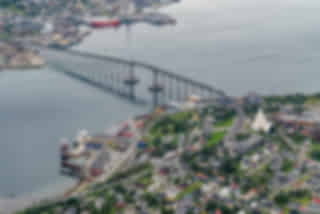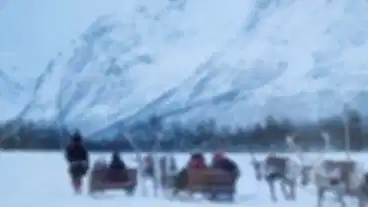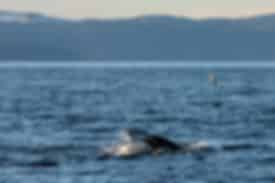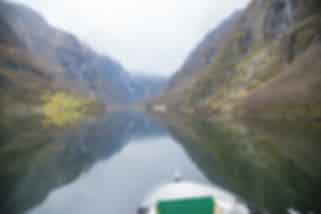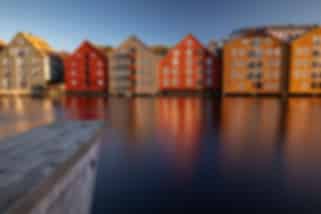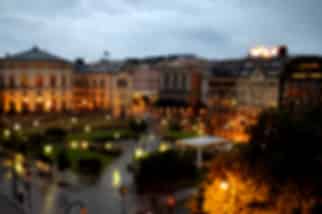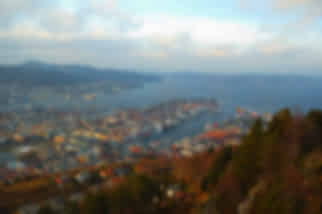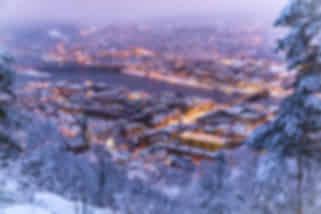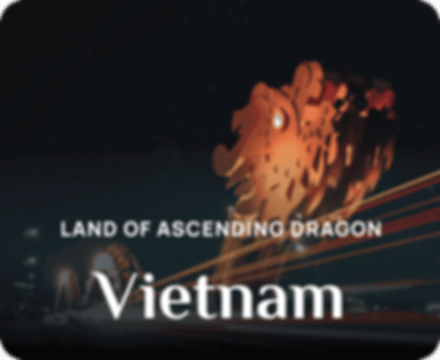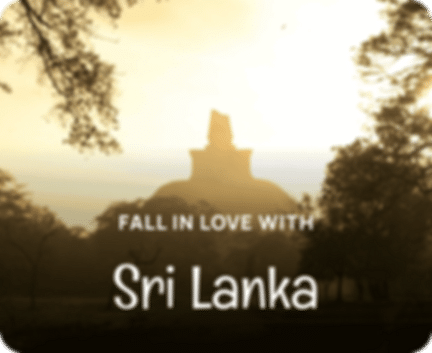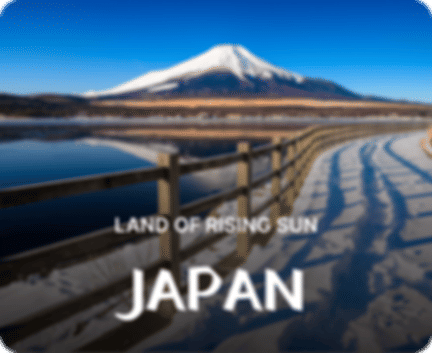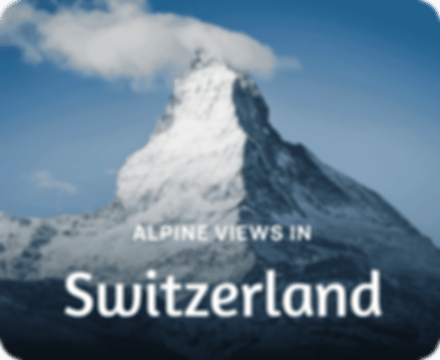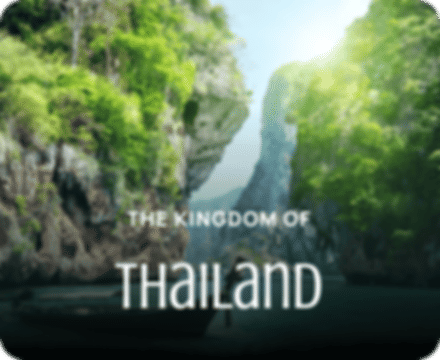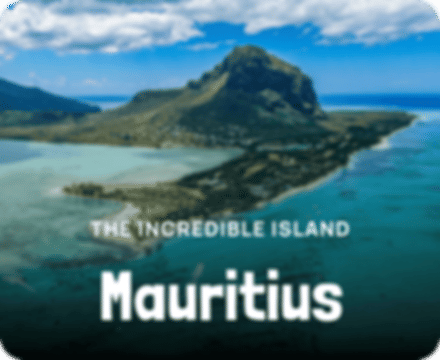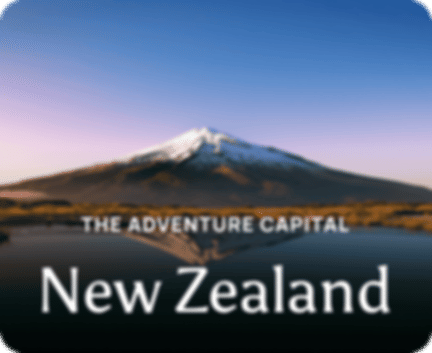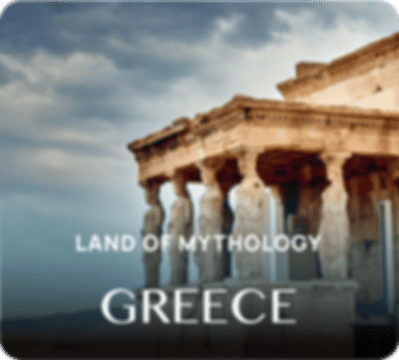Best Time to Visit Norway for Northern Lights Guide: When to See the Aurora Borealis
Author
Bhumika
Updated Date
November 19, 2025
Read
7 minutes
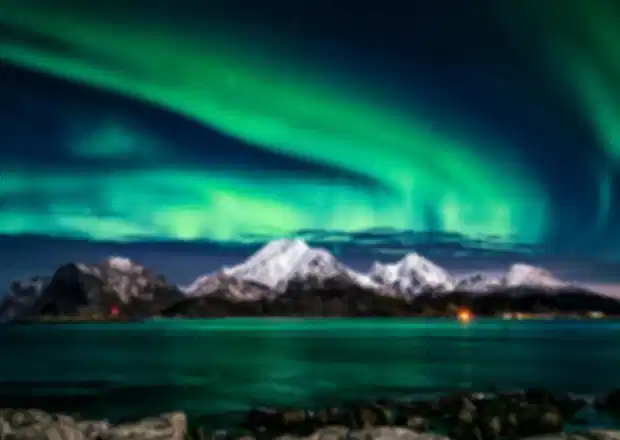
Have you ever wondered when the Best Time is to visit Norway for the Northern Lights? Visualise the experience of watching the sky turning green from late September to early April while the most magical show of nature’s night comes to Tromsø, Lofoten, Alta, Finnmark, and Svalbard — the glittering stars of Norway tourism. If you are a fan of snowy Arctic fairytales, nice autumn getaways, or calm fjord views, then know that each season has its own unique aurora magic. Are you willing to plan like a pro? This guide offers you perfect timing, preparation, and enjoyment!
Best Seasons to See the Northern Lights in Norway: Weather, Darkness & Activities Explained
| Season (Months) | Avg Temp Range | Daylight & Sky Conditions | Best For |
| Autumn (Sept–Nov) | 0°C to 10°C | Dark Nights; mild to chilly air | Early sightings, photography, and fewer crowds |
| Winter (Dec–Feb) | –15°C to –1°C | Long polar nights, heavy snow landscapes | Peak viewing chances & Arctic activities |
| Early Spring (Mar–Apr) | –7°C to 4°C | Clearer skies, brighter days, stable weather | Equinox aurora spikes & comfortable travel |
Autumn Northern Lights in Norway (Sept–Nov): Weather, Sightings & Photography Tips
Autumn in Norway is enchanting in every sense of the word. With the return of the nights after the Midnight Sun, the fjords are lit up with the bright and colourful leaves, and the Northern Lights start their shows. Earth-temperature-wise, September and October allow travellers to explore without dealing with heavy snow. Also, these months correspond with the geomagnetic equinox, which is a frequent booster of aurora activity. Hence, Autumn is the ideal time for travellers who want a balance of comfort, adventure, and breathtaking natural displays, ensuring unforgettable memories for everyone.
Weather Conditions
Throughout the fall, temperatures in the north of Norway vary from 0°C to 10°C. The nights become longer, thus giving more time for watching the Northern Lights. Generally, the sky is clearer in areas away from the sea, while the fjords mirror the auroras, making it mesmerising for the nature photographers.
Activities and Highlights in Autumn
- Hiking and Scenic Viewpoints: Autumn trails in Tromsø, Senja, and the Lofoten Islands are filled with colourful foliage and breathtaking landscapes.
- Northern Lights Photography: Capture the auroras reflecting off fjords, lakes, and serene coastal shores.
- Aurora Cruises and Glass-Roof Cabins: Enjoy the aurora display from the water or from unique glass-roof wilderness lodges.
- Wildlife and Ocean Excursions: Late autumn is the perfect season for whale-watching tours in northern Norway.
- Adventure Experiences: Kayaking through fjords, coastal trekking, and other adventure activities in Norway offer excitement and unforgettable experiences for travellers seeking both thrill and beauty.
Winter Northern Lights in Norway (Dec–Feb): Peak Aurora Season & Best Experiences
Winter in Norway is like a dream for anyone wanting to see the Northern Lights. The nights are long and unbroken, and the land is covered with snow, so the auroras seem to be a bright curtain drawn across the heavens. Most of the time, January and February have the dark hours that can be counted, but the clouds along the coast are unpredictable. Night chases with guides and photography in clear skies are best in Tromsø, Alta, and the inland of Finnmark.Norway in Februarywill be a great pleasure for travellers, as snow will cover the nature and the Northern Lights will be brilliant.
Weather Conditions
December through February brings cold temperatures, especially inland, but lodges and tour operators are fully prepared with thermal suits, heated cabins, and mobile chase vans.
Activities and Highlights in Winter
- Northern Lights Watching: Experience frequent and vivid aurora displays. Ideal spots include fjords, frozen lakes, and Arctic wilderness.
- Photography Opportunities: Capture stunning snow-covered landscapes illuminated by the shimmering Northern Lights. Perfect for both amateur and professional photographers.
- Arctic Experiences: Enjoy dog sledging, snowmobiling, and reindeer safaris across pristine snowfields. Ice hotels provide unique overnight stays that are unforgettable.
Month-by-Month Northern Lights Guide in Norway: Best Times for Aurora Viewing
| Month | Avg Temp | Aurora Conditions | Ideal For |
| January | -15°C to -5°C | Deep winter clarity | Hard-core aurora hunters |
| February | -12°C to -4°C | Clear and steady skies | Family & guided trips |
| March | -7°C to 2°C | Equinox peak | Longer days & photography |
| April | -3°C to 5°C | Early month sightings | Budget & late-season travel |
| May | 2°C to 12°C | Low probability | Nature lovers |
| June | 7°C to 17°C | Aurora unlikely | Summer explorers |
| July | 10°C to 20°C | Aurora unlikely | Summer holiday travellers |
| August | 9°C to 18°C | Aurora unlikely | Summer explorers |
| September | 3°C to 10°C | Equinox peak & mild | Photographers seeking early shows |
| October | -1°C to 7°C | Clear skies, long nights | Balanced trips with moderate cold |
| November | -5°C to 3°C | Dark and intense nights | Early winter adventures |
| December | -10°C to -2°C | Polar nights | Snow lovers & Christmas travel |
Top Places to See the Northern Lights in Norway: Tromsø, Lofoten, Alta & Finnmark
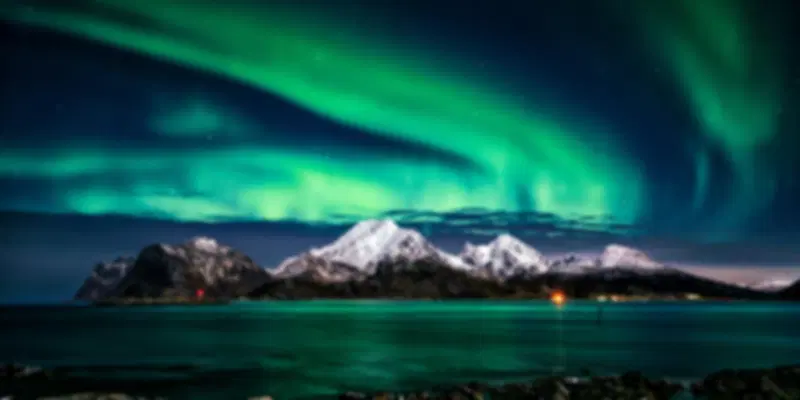
- Tromsø – Tromsø is where the aurora adventures live, with winter temps typically ranging from -6°C to -1°C. The sky can be cloudy at times, but a mobile aurora chase almost always finds you a clear sky. The city is perfect for travellers who want to take guided tours and enjoy the vibe of an Arctic city.
- Lofoten Islands – Lofoten’s fjords and the sea are like a fairy tale in winter, with a chill that varies from -2°C to 4°C. Under the clear stars, painters find their palette in the sky, which in turn becomes a heaven for photographers and the most beautiful island in Norway.
- Alta – It is the inland place with the most reliable auroral activities, surrounded by cold and dry air that can go from -12°C to -3°C. The clouds are fewer, so the chance of seeing the Northern Lights is very high; that is good for travellers chasing the calm Arctic landscape.
- Senja – Senja is where the silence of the aurora can be felt, and the temperature can be anywhere from 5°C to 0°C. The fjords reflect the glittering lights, and the tranquillity is the perfect getaway for travellers who love peaceful escapes under dancing skies.
- Finnmark Plateau – The Finnmark Plateau is a remote and wild region, with winter temperatures ranging from -15°C to -5°C. The area has great potential for witnessing a Northern Lights show, as the sky is always clear, and it is among the most reliable places in Norway for those wanting to see the Northern Lights without obstruction.
- Svalbard – This is an unforgiving Arctic region, and its polar night can reach temperatures as low as -20°C to -5°C. The place is only for adventurous travellers and thus offers long hours of darkness, with unforgettable and dramatic aurora and light displays.
Essential Tips to See the Northern Lights in Norway: Best Months, Locations & Gear
- Plan Around Dark Nights: The longer the night, the brighter the aurora. Aim for trips between late September and early April for maximum sightings.
- Choose the Right Location: Northern regions like Tromsø, Lofoten, and Alta offer the clearest skies. Svalbard is perfect for experienced Arctic travellers seeking dramatic displays.
- Dress for the Arctic: Layer up with thermal clothing, gloves, and hats. Winter nights can drop well below -10°C, so staying warm is essential for enjoyment.
- Book Guided Aurora Tours: Local guides know the best spots and can chase clear skies, increasing your chances of witnessing the most vibrant auroras.
- Combine Aurora with Arctic Activities: Pair Northern Lights watching with dog sledging, reindeer safaris, or fjord cruises for an unforgettable Norway in February experience.
Conclusion: How to Plan the Best Northern Lights Trip to Norway in 2026
Experiencing the Best Time to visit Norway for the Northern Lights is truly a bucket-list adventure. Each season in Northern Norway delights with its own enchantment – be it from the colourful skies over Tromsø and Lofoten or the serene Arctic nature of Finnmark and Svalbard. Organising your time in accordance with darkness, dressing warmly, and discovering with the help of a guide will enable you to have the best experience possible. Norway is such a place where you can make unforgettable memories while pursuing auroras or simply admiring snow-laden fjords. To have an experience of a lifetime! Pickyourtrail is here for you. Plan your trip hassle-free and book your personalised Norway tour packagenow.
FAQs
When is the best time to see the Northern Lights in Norway?
The best time to visit Norway for the Northern Lights is between late September and early April.
Which regions in Norway are best for Northern Lights viewing?
Top Northern Lights Norway destinations include Tromsø, Lofoten, Alta, Finnmark, and Svalbard.
Can I photograph the Northern Lights in Norway?
Yes, Northern Lights Norway photography is ideal in autumn and winter when nights are dark and skies are clear.
Do I need a guided tour for the Northern Lights in Norway?
Guided Northern Lights Norway tours improve your chances of seeing auroras and offer expert local insights.
Recommended articles for you
Discover Packages


Need help in planning?
Talk to our Travel Experts


